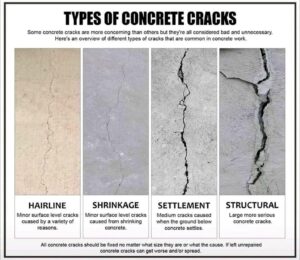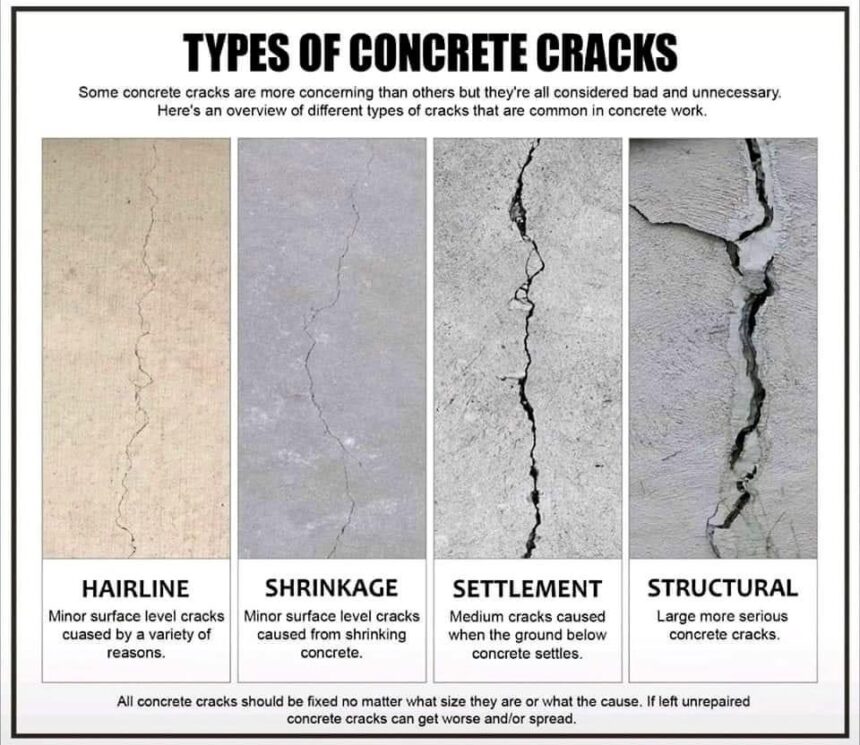Types of concrete cracking
Here are some types of cracks in reinforced concrete:
1. 𝐏𝐥𝐚𝐬𝐭𝐢𝐜 𝐬𝐡𝐫𝐢𝐧𝐤𝐚𝐠𝐞 𝐜𝐫𝐚𝐜𝐤𝐬: These cracks are often shallow, irregular. They occur when the concrete is still in its plastic state and is drying too quickly.
2. 𝐃𝐫𝐲𝐢𝐧𝐠 𝐬𝐡𝐫𝐢𝐧𝐤𝐚𝐠𝐞 𝐜𝐫𝐚𝐜𝐤𝐬: These are hairline cracks that run parallel to each other and can occur anywhere in the concrete as it dries and shrinks.
3. 𝐓𝐡𝐞𝐫𝐦𝐚𝐥 𝐜𝐫𝐚𝐜𝐤𝐬: This type of cracks is caused by temperature changes in the concrete. Extreme heat or cold can cause the concrete to expand or contract, resulting in cracks.
4. 𝐒𝐞𝐭𝐭𝐥𝐞𝐦𝐞𝐧𝐭 𝐜𝐫𝐚𝐜𝐤𝐢𝐧𝐠: These occur when the soil beneath the concrete settles or shifts, causing the concrete to crack and become uneven.
5. 𝐒𝐭𝐫𝐮𝐜𝐭𝐮𝐫𝐚𝐥 𝐜𝐫𝐚𝐜𝐤𝐬: These are cracks that occur due to overloading or inadequate design or poor materials or poor construction, in this case the applied loads exceed the capacity of the concrete to resist. Structural cracks typically exceed 0.3 mm, and may continue to widen over time. Structural cracks may include: Shear cracks, Flexural cracks, Shear/flexural cracks, Torsion cracks.
6. 𝐂𝐨𝐫𝐫𝐨𝐬𝐢𝐨𝐧 𝐜𝐫𝐚𝐜𝐤𝐬: These are cracks caused by expansion of the reinforcement steel inside the concrete due to corrosion.
7. 𝐂𝐫𝐚𝐜𝐤𝐬 𝐝𝐮𝐞 𝐭𝐨 𝐀𝐥𝐤𝐚𝐥𝐢-𝐚𝐠𝐠𝐫𝐞𝐠𝐚𝐭𝐞 𝐫𝐞𝐚𝐜𝐭𝐢𝐨𝐧 (𝐀𝐀𝐑): This is a chemical reaction that occurs between the alkaline cement paste and certain types of aggregates in the concrete, resulting in a gel-like substance that can cause expansion and cracking over time. AAR can include alkali-silica reaction (ASR) and alkali-carbonate reaction (ACR). —

Source: Infraser.ro







